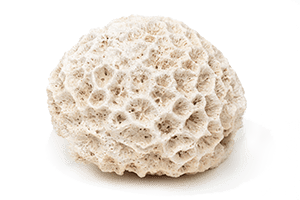Vanadium are essential trace minerals that benefits the body through growth and is involved in fat metabolism. It was found in the samples of stony corals tested at the level of 0.267. The RDA has not been established (Halstead), but is probably as low as 10-30 mcg a day, easily obtained from food sources. Richest food sources of vanadium are certain spices, dill seeds, parsley and black pepper, with lower, but adequate quantities in meat, fish and poultry. (Bergner) Our bodies can utilize only organic food form; inorganic (chemical) vanadium is toxic.
Symptoms of toxicity in animals include depressed immune system, destruction of red blood cells, even death. However, human studies have not yet produced the same serious side effects, although high doses over a long period of time have produced diarrhea and abdominal cramps and may deplete vitamin C. (Bergner) Intoxication may be caused by absorption of vanadium compounds, such as vanadium tetrachloride, used in commercial manufacturing processes; irritating to the digestive tract, skin, eyes and lungs. (Winter) Vanadium deficiency results in elevated levels of cholesterol and triglyceride levels. (Halstead)
A Consumer’s Dictionary of Food Additives, Ruth Winter, page 427.
The Dictionary of Minerals, Leonard Mervyn, page 211.
Dorland’s Illustrated Medical Dictionary, page 1806l
Fossil Stony Coral Minerals, Bruce W. Halstead, pages 81-82.
The Healing Power of Minerals, Paul Bergner, pages 174-177.
